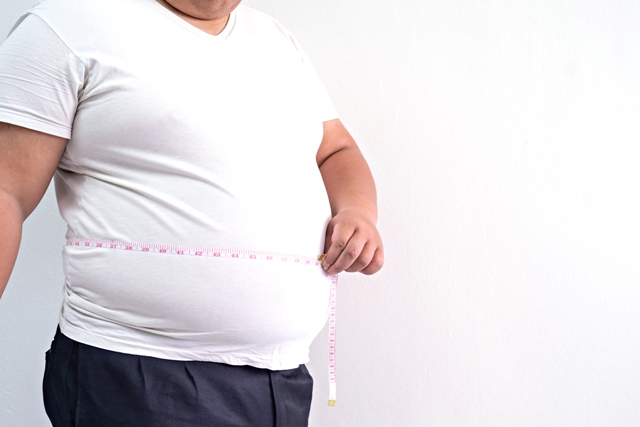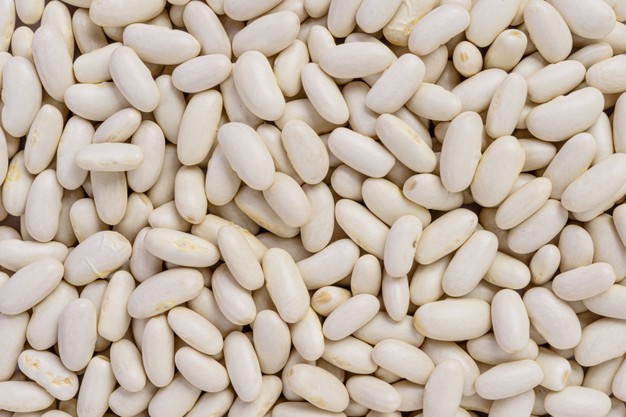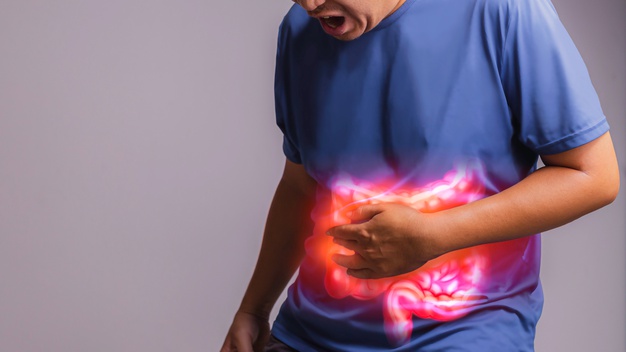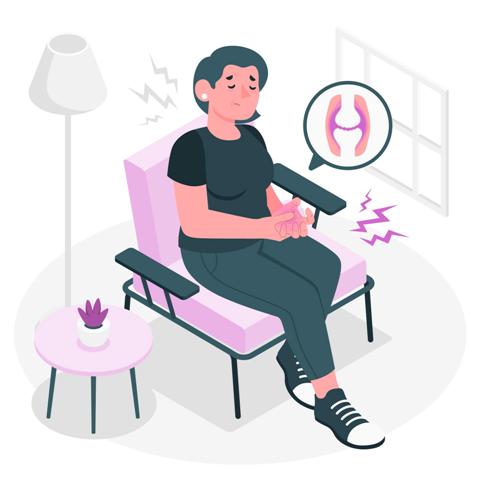Obesity is a condition characterized by excessive accumulation of fat within body. Prolong consumption of fat rich food or processed food or starchy food leads to obesity. In simple word it is an outcome of positive energy balance. Obesity is considered as a life threatening health issue as it may lead to various other health complications.
Risk of obesity
Obesity is associated with increasing the rate of developing various other diseases like –
- Obesity increases the risk of developing cardiovascular diseases. Increased fat percentage of body is responsible for promoting plaque formation within blood vessels and interferes with blood circulation as a result it increases the prevalence of blockage and atherosclerosis. It subsequently increases the risk of developing coronary artery disease, myocardial infarction, heart attacks and strokes
- Obesity is also considered as one of the most leading causes of diabetes. Fat interferes with the activity of insulin hormone as fat acts as a barrier to insulin thus obesity is considered as a risk factor of insulin resistance, which ultimately increases the prevalence of hyperglycemia
- Obesity is considered as one of the causes of hormonal imbalance too
- It increases the susceptibility of hypercholesterolemia
- It is also accountable for liver damages. Excessive fat accumulation within body is not good for our liver as it increases the risk of fatty infiltration, which ultimately leads to fatty liver disease and also hinders hepatic cell activity.
- It increases the risk of developing gall stones as well
- Obesity affects the reproductive health in an adverse manner. It increases the risk of infertility
- Excessive body weight may also affect the joint

Moreover obesity is very severe in its manifestation thus it is better to prevent obesity and maintain a healthy body weight for reducing the risk of developing various chronic diseases

Measurement of obesity
Body mass index or (BMI) is a tool, which is used for measuring obesity. Basically the BMI helps to measure the body fat based on the weight and height of an adult individual. It is calculated by using the following formula –
BMI = Weight in kg ÷ height in (meter)2
On the basis of Body Mass Index, the nutritional status of an individual is classified in the following way (https://www.ncbi.nlm.nih.gov) –
|
BMI |
Classification |
|
< 18.5 |
Underweight |
|
18.5 to 24.9 |
Normal |
|
25 to 29.9 |
Over weight |
|
30 to 34.9 |
Obesity (class - 1) |
|
35 to 39.9 |
Obesity (class - 2) |
|
>40 |
Extremely obese (class - 3) |
So, calculation of BMI can easily determine the grade of obesity
Dietary management
In order to reduce body weight effectively, you have to consume a fibre rich diet with plenty of fruits and vegetables
Below points will provide a general idea of the dietary pattern of an obese individual –
Energy
- It is better to consume 500 kcal less energy than the normal RDA for facilitating weight reduction
- Maximum of the calorie should come from complex carbohydrates
Carbohydrates
- 55 to 60% of daily calorie should come from carbohydrates
- It is better to focus on the consumption of complex carbohydrates (like whole grain, oatmeal, quinoa, brown rice, wild rice etc) as they contains fibre
- Fibre plays significant role in reducing body weight as it is related with delaying stomach emptying, which ultimately helps to provide a feeling of fullness for a long period of time as a result helps in decreasing over consumption by hindering appetite, which ultimately helps in weight reduction
- Fibre is also associated with decreasing the concentration of LDL, VLDL and triglyceride within body thus plays imperative role in reducing total body fat percentages as a result prevent visceral obesity too
- So in order to reduce weight in a healthy manner it is better to include complex carbohydrates in diet and simple carbohydrates should be avoided

Protein
Protein should be consumed as per RDA that is 1g per kg of ideal body weight and consumption of protein rich diet is also very effective for weight reduction as it helps in hindering appetite
Fat
- 25g of fat can be consumed daily, not more than that
- It is better to focus on plant fats like almond oil, coconut oil, corn oil, flaxseed oil, nut butter etc as plant oils contain plenty of unsaturated fatty acids, which are extremely beneficial for human health and they also help in decreasing bad cholesterol (LDL) concentration
- Consumption of saturated fatty acids and trans fat (like pastry, pizza, burger, Stick margarine, cookies etc) should be avoided

Vitamins and minerals
- All the Vitamins and minerals should be consumed as per RDA and special attention should be provided on B vitamins as they help in boosting up the overall metabolism of body. B vitamins participate in various metabolic reactions in the form of coenzyme thus consumption of B vitamins rich diet is extremely useful for enhancing catabolism, which ultimately facilitates weight reduction
- Plenty of fruits and vegetables should be consumed for meeting the body’s requirements of vitamins and minerals
- Fruits and vegetables are also rich in phytonutrients (apart from vitamins and minerals) that play various nutraceutical activities as well thus their consumption is thought to be extremely effective not only for weight reduction but also for promoting the overall wellbeing
Water
Abundant water should be consumed as it helps to cleanse the body by eliminating toxins as a result it ensures healthy metabolism

Amounts of food stuffs
Below table will provide a guideline regarding the amount of foods that should be taken daily in order to reducing body weight –
|
Food stuffs |
Amounts |
|
Cereals and millets |
150g |
|
Pulses and legumes |
50g |
|
Fruits |
100g |
|
Green leafy vegetables |
200g |
|
Other vegetables |
180g |
|
Roots and tubers |
120g |
|
Milk and dairy products |
250ml |
|
Egg/fish/meat |
50 to 60g |
|
Sugar |
10g |
|
Fats and oils |
10g |
Foods that should be included and excluded from diet
Below table will provide an outline of foods, which should be included and excluded from the diet of an obese individual –
|
Food included |
Food excluded |
|
|
Sample diet chart

In empty stomach:
Lemon juice with Luke warm water or flaxseed extract or chia seed extract – one glass
Breakfast:
- Scrambled egg with tomatoes and spinach
- Or, a slice of brown bread or rye toast with mashed avocado
- Or, oat meal with milk and seeds
Lunch:
- Tuna salad with cucumber, lettuce and tomatoes
- Or, Broccoli quinoa along with toasted almonds
- Or, chicken salad with corn and lettuce
- Or, vegetable wrap with Hummus
Snacks:
- Coconut yogurt with blueberries
- Or, cashew nut and Tangerine
- Or, nut butter with whole grain rice cake
Dinner:
- Roasted Mediterranean vegetables with tahini dressing
- Or, cauliflower rice with bean chili
- Or, chicken breast, greens as well as baked potatoes
Consumption of such a diet is really very effective for facilitating weight reduction

Source:
Betts, A. C., Froehlich-Grobe, K., Driver, S., Carlton, D., & Kramer, M. K. (2018). Reducing barriers to healthy weight: planned and responsive adaptations to a lifestyle intervention to serve people with impaired mobility. Disability and health journal, 11(2), 315-323.
Cerdó, T., García-Santos, J. A., G Bermúdez, M., & Campoy, C. (2019). The role of probiotics and prebiotics in the prevention and treatment of obesity. Nutrients, 11(3), 635.
Christensen, S. (2021). Reducing Weight Bias in Healthcare. In A Clinician’s Guide to Discussing Obesity with Patients (pp. 29-45). Springer, Cham.
Genitsaridi, S. M., Giannios, C., Karampatsou, S., Papageorgiou, I., Papadopoulos, G., Farakla, I., ... & Charmandari, E. (2020). A comprehensive multidisciplinary management plan is effective in reducing the prevalence of overweight and obesity in childhood and adolescence. Hormone Research in Paediatrics, 93(2), 94-107.
https://www.ncbi.nlm.nih.gov
Laurent, I., Astère, M., Paul, B., Liliane, N., Li, Y., Cheng, Q., Li, Q. and Xiao, X., 2020. The use of Broca index to assess cut-off points for overweight in adults: A short review. Reviews in Endocrine and Metabolic Disorders, 21, pp.521-526.
Sanchez, M., Darimont, C., Panahi, S., Drapeau, V., Marette, A., Taylor, V. H., ... & Tremblay, A. (2017). Effects of a diet-based weight-reducing program with probiotic supplementation on satiety efficiency, eating behaviour traits, and psychosocial behaviours in obese individuals. Nutrients, 9(3), 284.








